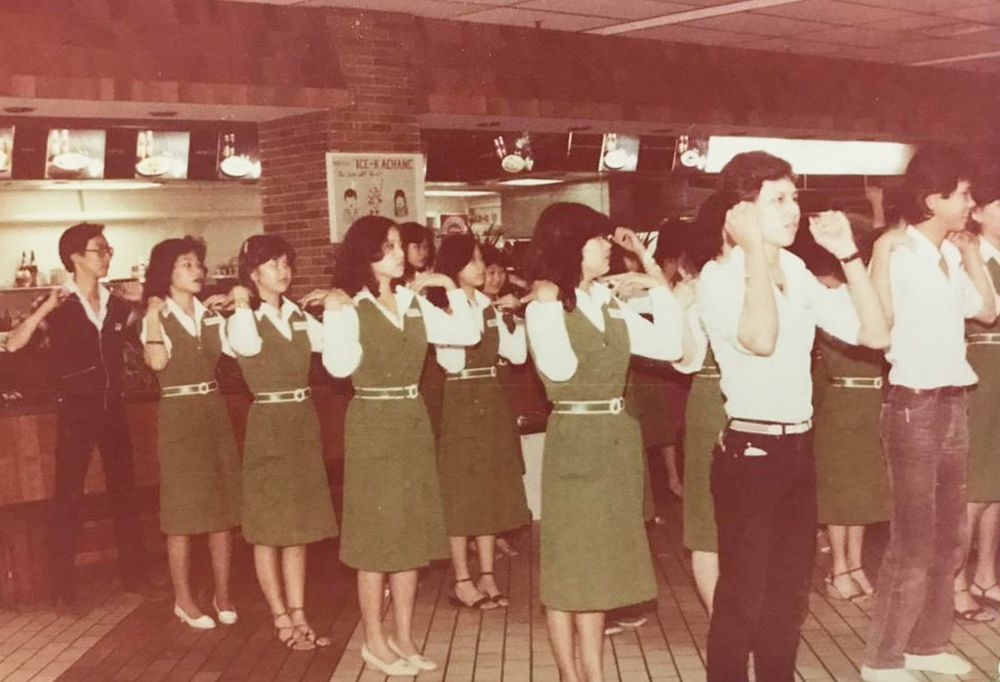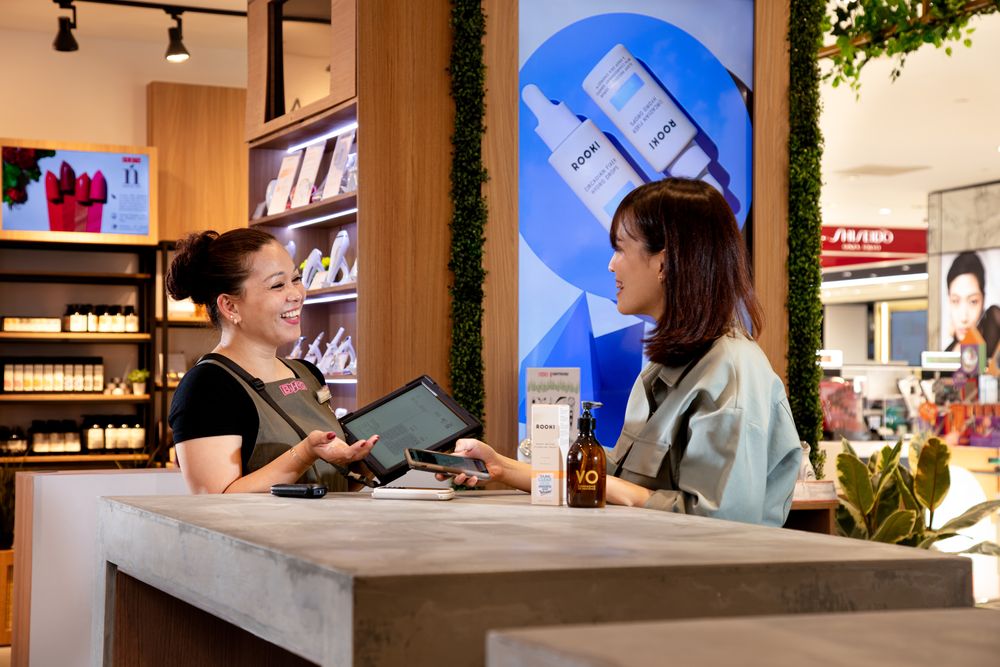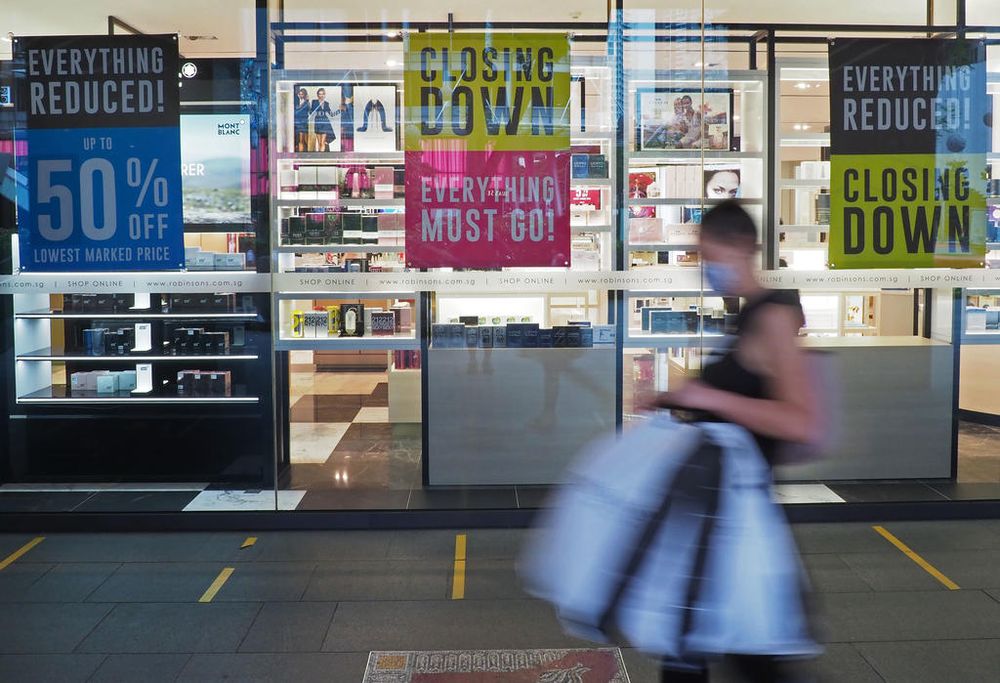SINGAPORE, Nov 22 — Year after year, a group of old friends would gather to reminisce about their bygone days — not of the mischief they got up to as students, but the camaraderie forged as employees of the old Yaohan department store that first opened in 1974.
Before Covid-19 struck, the size of their annual gatherings would reach up to 200 people. Among their many fond memories were the daily morning gatherings where they did mass exercises, sang the company’s song and the national anthem before starting the work day.
But more importantly were the motivational pep talks where they reminded each other they were both “wonderful and beautiful”, said a former human resource manager of the now-defunct Japanese chain.
“We used to have this encouragement throughout the day,” said Adrian Png, who joined Yaohan at the tender age of 16 in 1982, and stayed on for a decade.
The encouraging words made them feel good and ready to serve the customers, explained the 54-year-old, who is now a headhunter.
“When you have a good start in the morning, it will show in how you interact with a customer — with a positive outlook,” he said, adding that it consequently led them to wanting to find solutions for any problems their customers might face.
Chiming in, 62-year-old Jenny Gan, a former Yaohan cashier, said: “We worked with our hearts and our souls.”
About three weeks ago, Robinsons — one of Singapore’s oldest retailers at more than 160 years old — announced that it would be closing its two remaining stores at The Heeren and Raffles City Shopping Centre, as well as its outlets in Malaysia.
As consumers mourn the loss of yet another well-known department store, Robinsons’ closure brought back memories for many like Gan and Png who grew up shopping or working at such chains, which once dominated the retail scene and were a big part of Singaporeans’ lives.
For Gan, she believed in the work ethos of Yaohan so much that she stayed on for nearly two decades after joining the company in 1978.
“And that (good service) was why customers kept coming back,” added Png, who had gathered with his former co-workers on Monday (Nov 16) at Plaza Singapura, the site of Yaohan’s very first store.
A recurring theme that surfaced during TODAY’s interviews with the former Yaohan employees was the emphasis on training, which included learning how to serve customers better and rotating employees through different departments to widen the scope of their product knowledge.
These days, Png said he cannot help but feel a sense of disappointment when he walks into another department store because “you just don’t see people helping you when you need something”.
In his time, Png said the sales staff in the clothing department would pull out all the stops for a customer by showing them different sizes, fabrics and designs.
“We sometimes don't even realise that, hey, actually, we are like fashion consultants,” he said. “They just don’t bother today.”
Yaohan Singapore’s last branch in Thomson Plaza closed in 1998, following the bankruptcy of its parent company in Japan — a victim of the Asian Financial Crisis which began a year earlier.
Over the years, other department stores such as Sogo, Daimaru and John Little followed suit and shuttered their stores due to dwindling profits.
The latest to join the list of casualties is Robinsons, which started its business here in 1858 at Raffles Place. The household name announced its closure on Oct 30.
The Dubai-based Al-Futtaim Group, which acquired Robinsons for S$600 million in 2008, not only cited weak consumer demand as one of the reasons for its closure, but also described the business model of department stores as “outdated”.
However, the closure of Robinsons comes as no surprise to observers, as it mirrors a trend that is happening around the globe as well, amid changes in consumer tastes and shopping habits.
For instance, the oldest department store in the United States, Lord & Taylor, is currently in the midst of a final liquidation sale.
The iconic retailer, which first opened its doors to American shoppers in 1826, had been on a slow decline due to several different owners who struggled to properly merchandise and market the store.
In Japan, the death knell is similarly tolling for a number of its oldest department stores — some centuries old.
Even the country’s largest department store operator, Isetan Mitsukoshi Holding, is not immune, and has closed several stores over the past decade.
In September, the firm said sales across its five locations in the Tokyo city area plummeted by 35.5 per cent year-on-year.
How dept store shopping became a national pastime
It has not always been this bleak for department stores; there was a period where they enjoyed widespread popularity as titans of the retail landscape.
Yaohan first opened its doors in Singapore at Plaza Singapura in 1974 and joined a booming market of department stores providing one-stop destinations for a variety of international goods to Singaporeans.
It was just one of many foreign chains that would enter Singapore over the years, such as Printemps from France and Japan’s Daimaru, which both opened in 1983.
Homegrown department stores started to see sales soar from the 1970s, and one familiar name was Oriental Emporium, the largest department store chain in Singapore.
Brothers Lim Tow Seng and Lim Tow Yong founded Emporium Holdings Group in 1961 and opened Oriental Emporium in 1966, which sold Chinese products and found huge success. The group later opened another 15 department stores in Singapore and expanded to Malaysia and Brunei in the 1970s.
The big draw of these department stores was the accessibility to a wide variety of foreign goods, all in one location. With quality customer service and amenities thrown into the mix, people flocked to these places — making shopping at a department store a national pastime for Singaporeans.
In December 1975, an article in The Straits Times reported that Yaohan at Plaza Singapura topped the list as the busiest shopping complex in the country, with over 955,000 people visiting its basement one and two weekly.
The Japanese chain continued to pull in the crowds over the years, some enticed by its iconic anpan red bean buns, which were sold in limited numbers to customers, said Png and his former co-workers.
So popular were the buns that Yaohan’s various bakeries would dedicate an entire day just to sell them, said Richard Or, 62, who used to work as a baker for the company.
Other attractions included the weekly one-day offers that gave customers something to look forward to, said Gan.
“Now, every day got discount promotion. Don’t know which one is the real one,” she said wryly.
Jonathan Sim, a lecturer at the National University of Singapore (NUS), would visit Daimaru at Liang Court every Saturday with his family during his kindergarten and primary school days.
“We’d go for dinner, they’d drop me off at the toy section for one to two hours while they shop at the department store before they pick me up and go to the supermarket and end our day,” said the 33-year-old.
When news broke that Daimaru was to close down in Singapore, Sim said there was a “sense of emptiness” as it was their weekly go-to-destination.
Housewife Michelle Chin also had fond memories of department stores as she would follow her mother on weekly visits to the likes of Tangs, Fitzpatricks and Chancellor.
But for the 50-year-old, the Yaohan store at Thomson Plaza was home to some fond memories.
“Yaohan was where I bought all my baby stuff for my first-born with my sister, like clothes, napkins and everything…When Yaohan closed, it was quite sad as I had those fond memories.”
After having their moment in the sun, department stores in Singapore began closing one after another as competition stiffened and financial woes hit the chains — Yaohan put up the shutters in 1998 after its parent company was declared insolvent in 1997, while Daimaru closed in 2003 when the company decided to focus on its stores within Japan.
Emporium Holdings was also not spared as it was hit by the recession in 1985, accumulating a S$10 million loss. Despite owning 113 business spread across Singapore, Malaysia, Brunei and Hong Kong, it was liquidated in 1987.
John Little, Singapore’s oldest department store, also closed its stores in 2016, 174 years after opening its doors in 1842, as its parent company Robinsons Group started consolidation efforts to focus on businesses that were growing within the group.
Is the allure of dept stores still relevant?
Before e-commerce came along to shake up the retail scene, department stores had a winning formula in the form of their “all-under-one-roof” concept which allowed families to meet their needs in terms of product variety, pricing and services, industry experts told TODAY.
Singapore Management University (SMU) Lee Kong Chian professor of marketing Dr Kapil Tuli said: “A lot of department stores are very good at curating a unique collection of items like European or Asian brands from different parts of the world.”
“However with e-commerce, that access to international goods became easy, so part of the value proposition of department stores started eroding over time.”
Dr Tuli, who is also a director at SMU’s Retail Centre of Excellence added that good service and air-conditioning were also a big draw for customers during the heyday of department stores in Singapore.
The good service was something frequent shoppers of older department stores appreciated, which Sim felt was their strength but one that had been lost with time.
“I realise one thing we don't have in department stores nowadays are very experienced and well-trained salespeople who have very expert product knowledge, such as someone that is an expert in knives or ties and can tell you what works best for you or how to use it properly,” he said.
“Now, (department store staff) are mostly part-timers or people who are incentivised by a commission to sell a certain brand, so that trust in a salesperson isn’t there anymore.
”However, department stores still have an advantage amid an altered retail landscape. Dr Tuli noted that a physical storefront allows department stores wishing to go digital to save on added logistics cost when dealing with customers’ returns, and they are also able to offer pick-up services.
Warren Hayashi, president of Asia-Pacific for payment platform Adyen, added that customers of department stores can “get a feeling of instant gratification as they can walk away with the product in hand, without having to wait or pay for delivery” after making a purchase.
According to Adyen’s internal study, which surveyed 379 Singaporean millennials aged 18 to 34, 72 per cent were looking forward to shopping at retail stores for leisure when Covid-19 restrictions eased.
Moreover, 59 per cent of this demographic indicated that they preferred to shop at a physical store.
NUS Business School’s Associate Professor Lawrence Loh said department stores also provide a more logical layout for customers to find their items as compared to a shopping mall.
“You walk in a shopping mall, shops are scattered all over and may not be a through-train for all your needs. Whereas a department store has the logic of a through-train for anything you want under one roof… in one unified place within a mall,” he said.
Dr Tuli added that malls would need to take over the job of department stores when selecting tenants if these stores closed down, and malls would also be impacted by the lack of an anchor tenant to draw customers.
There is also the added benefit of being able to see an item at the store before buying it, especially if it is a big-ticket item, said payment platform Atome’s chief executive officer David Chen.
“Most shoppers would have gone to play with the product in-store before buying online. The same is often true of an expensive dress or pair of shoes, which needs to be tried on first,” he said.
Samuel Tan, course chair of the diploma in retail management in Temasek Polytechnic, said that department stores also generate buzz and interest to pull in shoppers during seasonal sales.
One example would be the Tangs Christmas shops and festive displays, which “are always something to look out for and talk about by shoppers at the end of the year”.
Threat of online shopping
Despite this, advances in technology over the years have affected the appeal department stores once had, according to both industry observers and younger shoppers.
Tan said the widespread accessibility of the internet has “disrupted the traditional way of buying”, and even offers a virtual alternative of having everything in one space.
“With the widespread possession of mobile phones, tablets and laptops, shoppers are finding that even without stepping out of the comfort of their homes, they can browse across shopping e-platforms to search for merchandise and do price comparison effortlessly,” he said.
This is precisely the appeal of e-commerce for Singapore Institute of Management student Amanda Seah, who appreciates the convenience of having deliveries sent to her doorstep since there are no department stores near her home.
The ease of being able to zoom in on the exact product she wants online, and even buying it at a lower price on occasions, is an added boon for the 22-year-old, who last visited a department store about three months ago.
For Toh Lip An, 24, shopping online is more reliable since he gets to read product reviews from other customers before making a purchase.
“Promoters at a department store are paid to be biased towards certain products,” said Toh, who works in community engagement.
That aside, it sometimes boils down to just not being able to find a product or brand that excites or resonates with younger shoppers, said 22-year-old insurance agent Benjamin Tan.
An example which he gave was basketball shoes, which he feels department stores lacked in variety compared to online retailers that not only carry limited edition pairs, but those named after his favourite players.
Some department stores have yet to go the whole hog when it comes to e-commerce, with Atome’s Chen noting that they had not fully developed their digital presence when the circuit breaker was imposed in Singapore a few months ago. This forced even more people to rely on established online shopping portals such as Lazada or Amazon.
NUS’ Assoc Prof Loh added: “A digital shopfront does not make a digital transformation. It has to be a very holistic reconfiguration of the business.”
What this means is that department stores will have to rejig both their inventory and distribution system to make them more efficient.
“It has to go deeper than just a webpage,” Assoc Prof Loh said.
Even if department stores were to list themselves on an e-commerce platform, they will have to grapple with another issue — the risk of getting buried under the avalanche of thousands of brands online.
Temasek Polytechnic's Samuel Tan said: “(Department stores) will need to reinvent their purpose and decide on how they can complement their virtual presence and physical stores.”
How dept stores can reinvent themselves
That said, would it be possible for department stores to reinvent themselves for a new generation, given that Robinsons previously told TODAY that the online model “is not one that works for department stores”?
The experts interviewed believe that the eventual demise of the department store as a business model is not a foregone conclusion yet.
Adyen's Hayashi said department stores must stop seeing e-commerce platforms and offline stores as separate channels, and instead view them as a means of offering customers a multi-channel shopping experience.
Citing their merchant partner, Dutch department store De Bijenkorf, as an example, he said the high-end chain has been using technology to personalise in-store experiences, while providing online offerings.
For instance, to ensure no customer journey is wasted because of an out-of-stock item, the department store has installed in-store kiosks that allow shoppers to browse for more items online.
Once they find an item, they can then order and pay on the spot using an in-store payment terminal, said Hayashi.
Since De Bijenkorf manages its in-store and online sales in one system, it makes no difference where the payment takes place, he added.
Furthermore, De Bijenkorf also removes the hassle of customers needing to wait in queues, as it offers mobile point of sale terminals which let sales assistants take payments from anywhere on the shop floor.
The use of such technology, said Dr Tuli, could also help with manpower costs.
To ensure their survival, department stores will also have to re-imagine the use of their shop space.
Hayashi suggested transforming physical spaces into a gallery for products, rather than just stacking or putting them on racks, which may seem unorganised and unappealing.
“People shop with their eyes and Singaporeans feel that the layout of a store is just as important to them,” he said.
And since the shop serves as a showroom for products, customers will still be able to “touch, feel and assess” them before they make a purchasing decision, said Dr Tuli.
“A shopper’s engagement with a brand may start on social media at the product discovery phase, followed by going in-store to try products, and then purchasing the item online,” said Hayashi.
Highlighting local women’s clothing store Love, Bonito as a good example of a curated space, Hayashi said it was designed with its customers in mind.
“We know that shoppers are looking for a unique ‘wow’ experience when they go into a store, and Love, Bonito has truly designed a very beautiful and Instagrammable store in Funan (shopping mall),” he said.
Not only are the clothes and products laid out perfectly, alongside iPads that facilitate online shopping of out-of-stock items, but the store also has a community space for events, workshops, and brand collaborations for the Love, Bonito community to grow together, said Hayashi.
A smaller shop front may also be more cost-effective, said Assoc Prof Loh, as it will be able to reduce the “ultimate killer” for any business — high rent. Excess stock can be stored at a warehouse in an industrial park, where the digital side of the business is conducted.
In a similar vein, Dr Tuli suggested that retailers could try to enter into a revenue-sharing deal with the landlords, as opposed to just paying rent. “That might be an option that is more sustainable in the current climate.”
While TODAY has sought comments from various department stores in Singapore, only BHG responded.
The 26-year-old store operator said it embarked on a three-year plan last June to rejuvenate their product categories as well as integrate technology in the shopping experience, among other objectives.
For instance, it launched four in-house fashion labels in June that were designed by the company’s very first in-house designer, Lasalle College of the Arts graduate Esther Choy.
“We believe that in order to attract a new crowd of young savvy shoppers, we need to look to that very young savvy talent pool to develop products that relate,” said a BHG spokesperson.
Other changes include in-store payment options similar to De Bijenkorf’s, as well as digital touch points that allow a customer to discover more about a featured product.
“For us, e-commerce is not a standalone element, but an integral part of our digitalisation efforts,” said the spokesperson.
Still, even with the adoption of technology and a radical redesign of a department store’s business model, it is the human touch that will draw people back, said Assoc Prof Loh.
Hence, operators need to focus on training their staff to move beyond the “old paradigm of customer service with a superficial smile” to customer engagement, he said.
Rather than trying to hard sell a specific product to a customer, Assoc Prof Loh said having a staff who is able to sincerely engage with a customer and find out what his or her needs are will leave the customer feeling happy and increase the chances of closing a sale.
While this will incur additional training costs, Assoc Prof Loh believes that it is worth it.
Whatever the case, Png, the former Yaohan staff, feels that department stores still have their relevance in society.
“We humans love to shop,” he said. “A brick-and-mortar business allows people an avenue to go out together and bond.”
Indeed, the bonds forged between him and his former colleagues along the aisles of Yaohan all those years back have withstood the test of time.
There is every chance the same can be said of department stores in the years to come. — TODAY






















